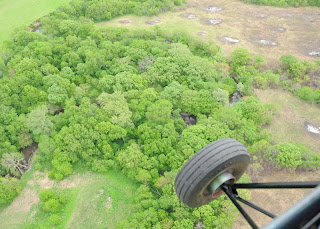Pilot’s Operating Handbook - Belite 254 / Taildragger / Trike
This is not an FAA approved document.
www.beliteaircraft.com
1. Safe operation.
The pilot is responsible for verifying that the Belite is in a safe condition for flight. This responsibility is only that of the pilot, not of any other individual or company.
2. Limitations.
2.1 The Belite’s maximum gross weight is 550 pounds. Do not exceed this weight under any circumstance.
2.2 Under no circumstances exceed 80mph CAS. Do not exceed 80mph under any circumstance.
2.3 Do not use flaps unless speed is 62mph or less.
2.4 Do not taxi in more than 12 knots of wind.
2.5 Demonstrated crosswind component is 6 knots.
2.6 Never takeoff or land with a tailwind.
2.7 Always ensure that sufficient runway is available for takeoff and landing.
2.8 Pilot weight must not exceed 270 pounds.
2.9 All aerobatic maneuvers, including spins, are prohibited.
2.10 Do not exceed 2 Gs of wing loading (positive) or 0 Gs of wing loading (negative). (The carbon fiber wing has been static tested to approximately 3.8Gs positive and -2Gs negative, but this has never been demonstrated in flight.)
2.11 In order to maintain FAR 103 legal flight, ensure that empty weight does not exceed 254 pounds (without parachute) or 278 pounds (with parachute). Also ensure that level flight does not exceed 62mph under full power. (Utilize a ground adjustable throttle stop as necessary, or change propeller pitch.) Compliance is the responsibility of the pilot.
2.12 In order to maintain FAR 103 legal flight, stall speed must be 28mph or less under specified conditions. The wing design used in the Belite design is very heavily undercambered and is an excellent choice for slow stalls and slow flight. It must be possible to demonstrate a stall at 28mph when Belite weight is 254 pounds or less, pilot weight is 170 pounds, and fuel weight is 30 pounds. Compliance is the responsibility of the pilot.
2.13 In order to maintain FAR 103 legal flight, usable gasoline capacity must not exceed 5 gallons (30 pounds). Compliance is the responsibility of the pilot.
2.14 In order to maintain FAR 103 legal flight, cruise speed must be limited to 62mph or less. This may be achieved by engine selection, propeller selection, or by throttle stop. Compliance is the responsibility of the pilot.
3. Demonstrated takeoff performance.
The Belite has demonstrated a ground roll of 330 feet in medium grass and no wind, with a density altitude of 2600 feet. This was achieved with approximately 37 horsepower. Additional horsepower will substantially shorten takeoff roll. Conversely, reduced horsepower will substantially lengthen takeoff roll. At sea level, we estimate that a takeoff roll of 200 feet will be required with 37 horsepower (dry pavement, no grass, no headwind, standard conditions). Takeoff rolls of less than 100 feet have been observed under conditions of increased power and/or headwinds.








